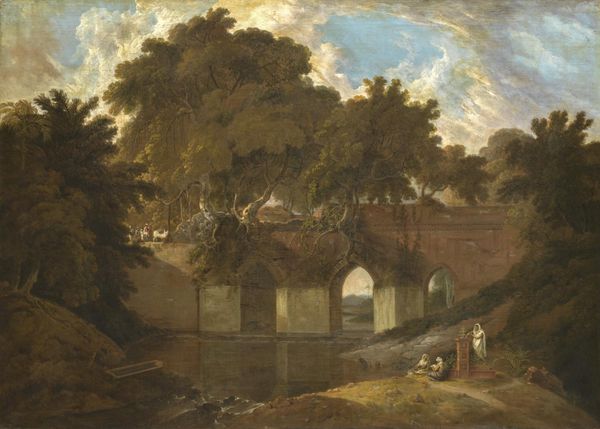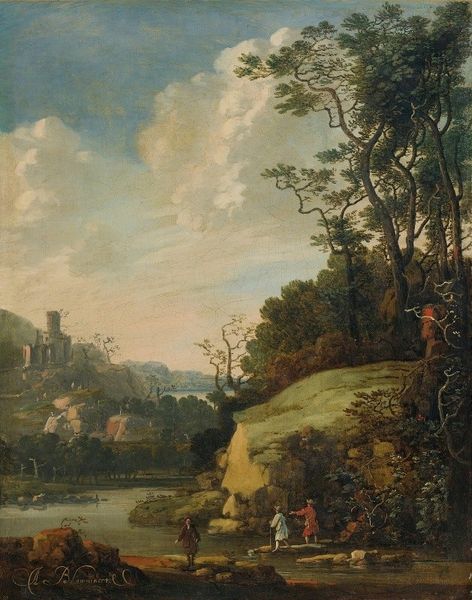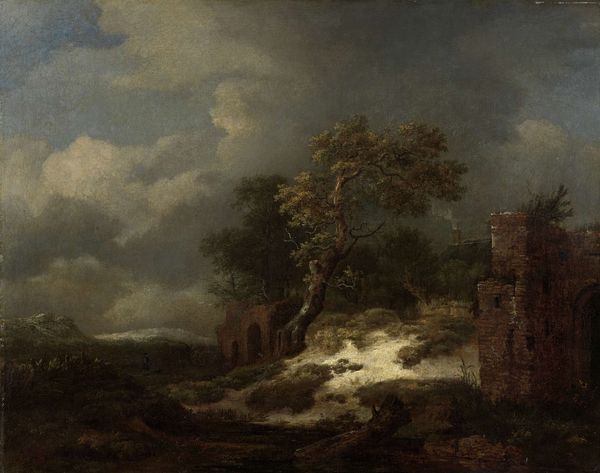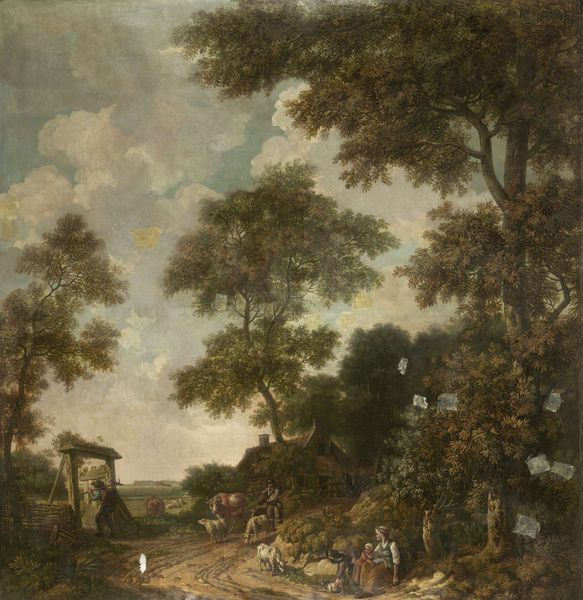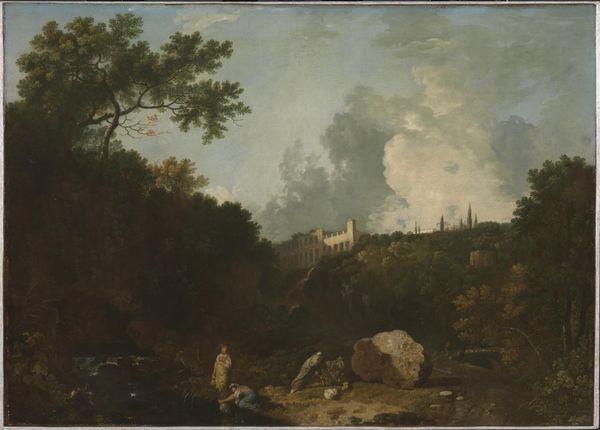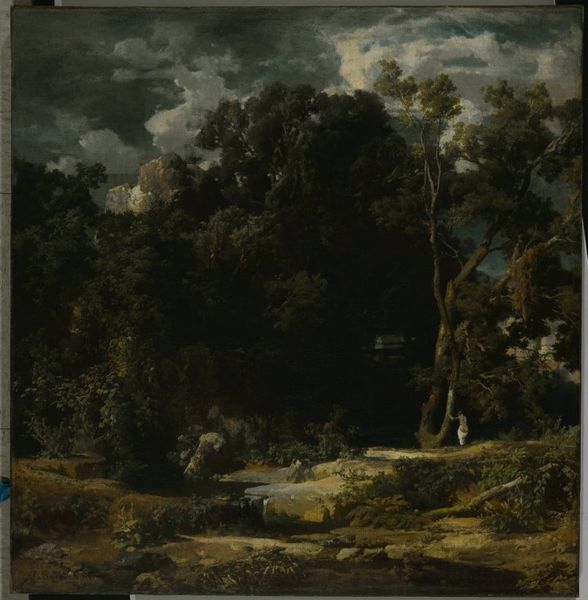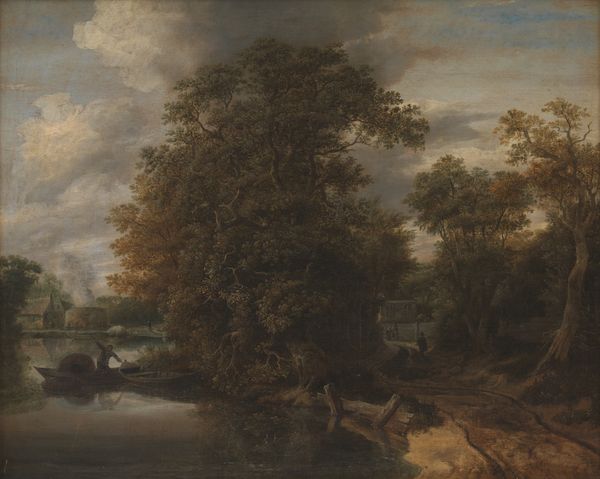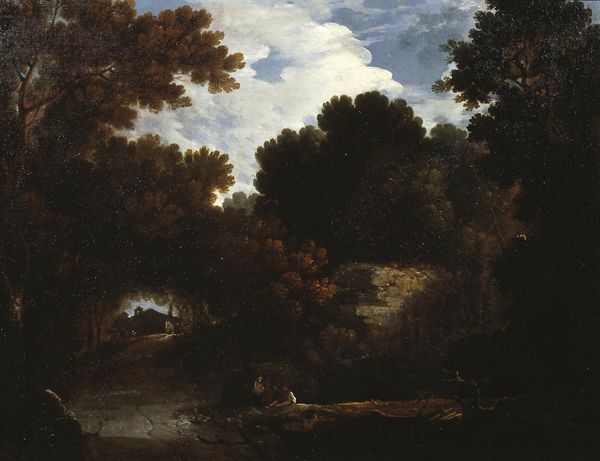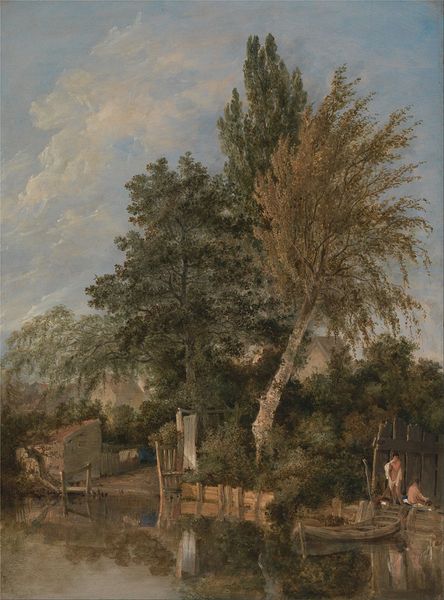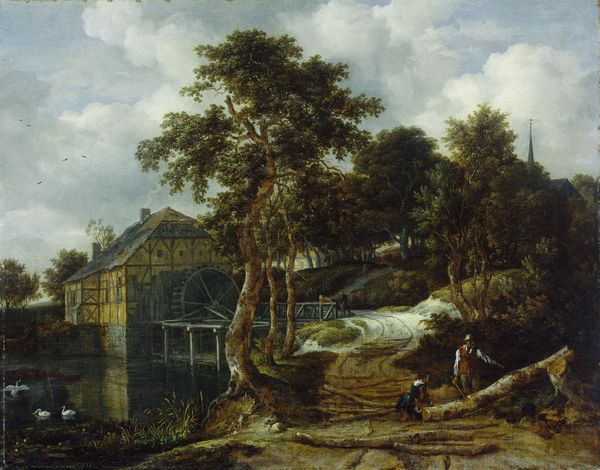
painting, oil-paint
#
painting
#
oil-paint
#
landscape
#
oil painting
#
genre-painting
#
rococo
Copyright: Public Domain: Artvee
Curator: I find this 1760 oil painting by Jean-Honoré Fragonard, entitled "The Grand Staircase of the Villa d’Este at Tivoli," quite captivating. Its hazy atmosphere and architectural grandeur suggest a moment of idyllic reverie. Editor: It's undeniably moody! There's a stark contrast between the almost dreamlike, loose brushstrokes describing the vegetation and the comparatively solid depiction of the stone. I'm curious about the physical work involved in landscaping those tiered gardens; all that careful labor rendered into a fleeting, ethereal moment. Curator: A fitting point, given the Rococo style, which often blends aristocratic leisure with an awareness of pastoral life. Fragonard utilizes diagonals to draw the eye through the pictorial space, creating an implied narrative, even with such subtle detail. Note the cascading water, framing the figures almost like players in a stage production. Editor: And those figures are small relative to the overall composition. They're placed almost as decoration—further highlighting the manufactured, constructed nature of the gardens themselves. How many hands shaped this space? Were they recognized or compensated justly for transforming the terrain to such dramatic effect? Curator: Perhaps Fragonard uses the vast scale of the staircase to reflect on humanity's capacity to transform the natural landscape. Observe the formal structure inherent in the repeated curves and vertical emphasis, creating an interplay between constructed artifice and organic growth. Editor: True, but what about the unseen labour to produce that “artifice?” Fragonard depicts leisure and pleasure but overlooks the intense exploitation of laborers, sculptors, gardeners—people transforming brute matter for aristocratic enjoyment. Curator: That is a stark observation, but nonetheless adds complexity to interpreting Fragonard’s choice of representing this site of pleasure. The material reality behind such a picturesque scene asks us to consider layers of cultural consumption. Editor: Precisely! It’s this dialogue between the tangible labor and artistic representation that gives the painting depth. Curator: Yes, a worthwhile consideration for understanding the enduring appeal, and unsettling questions, held within this painting.
Comments
No comments
Be the first to comment and join the conversation on the ultimate creative platform.

